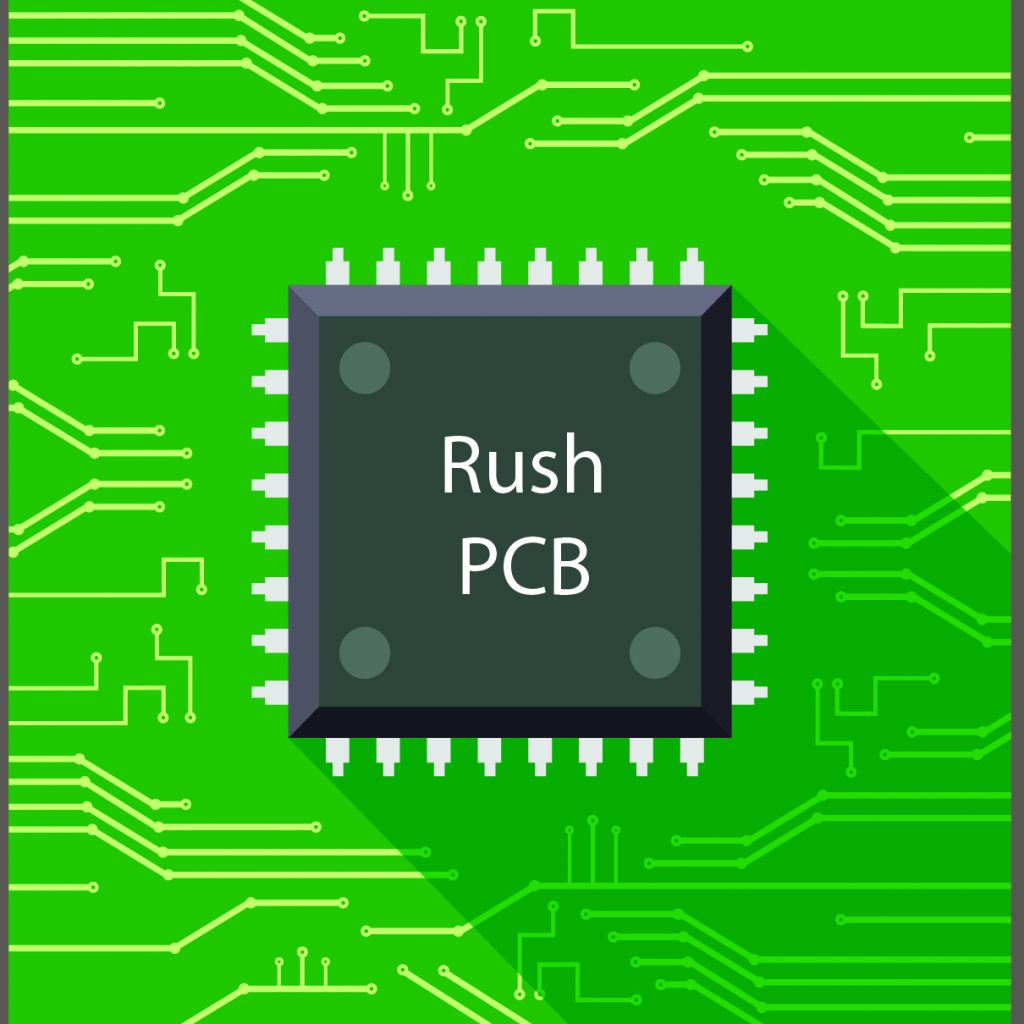Effective PCB Manufacturing Process for 2019
Rush PCB is a leading PCB manufacturer and assembler in the US. With several decades of experience in contract manufacturing and assembling PCBs, Rush PCB uses the latest and most effective processes, machinery, and techniques for providing customers the best quality products. However, a successful PCB project does not depend on the manufacturing process alone.

A successful PCB project is based on four independent stages—design, manufacturing, test, and pcb assembly. Although independent, the first three stages have a common factor linking them—DFM, or Design for Manufacturing. Additionally, all the four stages are further linked with DFA, or Design for Assembly. There is yet another factor in successful completion of the PCB project—collaboration with the contract manufacturer.
OEMs typically design a PCB according to their requirements, and hand over the Bill of Materials and the design files to the contract manufacturer or CM for fabrication. On testing the prototype, changes are incorporated in the design. The consistency in manufacturing and assembly processes is maintained by testing the PCBs and taking correcting steps as necessary. However, the above traditional process has several pitfalls.
Designing the PCB without consulting the CM or fully understanding the manufacturing process can lead to unnecessary holdups during the fabrication process. It may lead to several rounds of design changes that often increase the time to market. Incorporating DFM and DFA rules from the start of design along with consultations with the CM can eliminate nearly all the potential mismatches that are likely to crop up at various stages of fabrication and assembly.
Implementing an Effective PCB Manufacturing Process
For a PCB manufacturing process to be effective, it must have an objective. Usually, the objective is to transform the design into a quality assembled product that performs as intended and reliably. Although the traditional method of PCB development does eventually meet this objective, it is not the most effective solution.
Developing a PCB has its own constraints of time and cost. If the OEM is targeting products for use in automotive, medical devices, the military, or aerospace, there are strict regulatory standards the PCB must meet as well. The additional regulatory standards deal primarily with quality and reliability, and establishing conformation to these standards involves further testing. Rush PCB has prepared a list of best practices that lead to effective PCB manufacturing.
Selecting Components in the BOM
All components in the BOM must be available at hand before the CM can start the assembly process. Since most CMs maintain real-time component availability status for turnkey PCB manufacturing, consulting the CM for sourcing components can help OEMs overcome shortages and hold ups. Reputed CMs such as Rush PCB source components only from genuine suppliers, and this helps in guarding OEMs from inadvertently using counterfeit components.
Using DFM Guidelines
Consulting the CM’s DFM guidelines while designing the PCB layout, and using common industry specifications and tolerances can ensure specifications are within the capabilities of the equipment the CM uses. This can avoid lengthy design re-runs involving time and money.
Using Proper Format for Files
It is important the design files be in the format preferred by the CM to reduce the possibility of errors. The OEM should preferably use their ECAD to export the design and BOM files to the CM.
Selecting Board Materials
The CM is likely to have access to board materials that are more cost-effective than those the OEM proposes. Therefore, consulting the CM about selecting materials, layer stackup, copper weight, solder mask, silkscreen will lead to a buildable design and ease the board fabrication process.
Also Read: Advanced PCB Materials and Greener Manufacturing
PCB Assembly
The CM can offer valuable suggestions about soldering techniques and building the PCB in panels. Consulting them will certainly maximize the assembly efficiency for the OEM, while at the same time reduce the assembly costs.
Testing
CMs can offer a huge amount of support when testing prototypes. For instance, Rush PCB offers micro sectioning to locate different types of faults such as soldering and buried via failures that can only be examined under a microscope. CMs can also offer recommendations to the design team of the OEM to incorporate during the design phase that helps in testing boards and assemblies.
Collaborating with the CM
Collaborating with the CM at key points of the design process goes a long way in reducing the total time and effort of the OEM for a successful completion of any PCB project. Obviously, the best collaboration efforts should start early in the design stage, maintaining an open and transparent relationship to the end. This also helps to optimize the PCB manufacturing process.
Conclusion
For the OEM, a collaborative approach with their CM may not be a linear effort. However, the collaboration will lead to a clearer understanding of the downstream design intent and the requirements and constraints of manufacturing, which can lead to the OEM taking actions early in the process to improve the efficiency and produce better quality.
According to Rush PCB, for an OEM involved in concurrent engineering and agile manufacturing, the above approach has benefits that can only multiply the gain in time to market. As all participants provide inputs and gain insights, the implementation of the effective PCB manufacturing process results in overall improvements.

